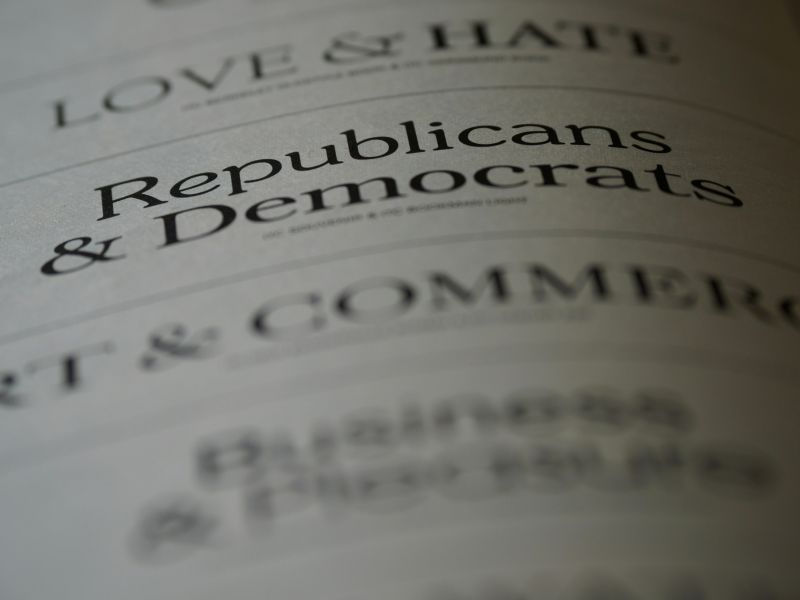In today’s digital-first world, your website is often the first impression potential customers have of your business. From layout and color schemes to content and navigation, every element plays a role in shaping that impression. However, one often overlooked yet critical component is typography. The font you choose can significantly influence how users perceive your brand, interact with your content, and ultimately, whether they convert into customers. In 2024, as design trends evolve and user expectations rise, selecting the right font for your business website has never been more important.
Whether you’re a startup, a small business, or a large corporation, the typography on your website should reflect your brand’s personality while ensuring readability and accessibility. As a full service website design & SEO agency for professionals, small businesses, and corporations, we understand the importance of choosing fonts that not only look great but also perform well in terms of user experience and search engine optimization.
In this comprehensive guide, we’ll explore the best fonts for business websites in 2024, examining their design characteristics, usability, and how they align with different brand identities. We’ll also provide practical tips on how to implement these fonts effectively to enhance your website’s performance and aesthetic appeal.
1. Why Typography Matters for Business Websites
Typography is more than just choosing a pretty font. It’s a powerful tool that communicates your brand’s voice, builds trust, and guides users through your website. In 2024, with increasing competition and shorter attention spans, the role of typography in web design is more crucial than ever.
Here are a few reasons why typography matters:
- First Impressions: Fonts set the tone for your website. A clean, modern font can convey professionalism, while a playful script might suggest creativity and innovation.
- Readability: If your text is hard to read, users will leave. Fonts must be legible across all devices and screen sizes.
- Brand Identity: Fonts help reinforce your brand’s personality. Consistent typography across your site and marketing materials builds recognition and trust.
- SEO and Accessibility: Search engines and screen readers rely on clean, semantic HTML and readable text. Good typography supports both.
Choosing the right font is not just a design decision—it’s a strategic one. It affects how users perceive your brand, how they interact with your content, and how well your site performs in search rankings. For more insights on how typography fits into a broader digital strategy, visit our marketing page.
2. Top Font Trends for Business Websites in 2024
As we move into 2024, several font trends are emerging that cater to both aesthetics and functionality. These trends reflect the growing demand for clean, user-friendly, and brand-consistent typography. Here are the top font trends to consider for your business website:
- Sans-Serif Dominance: Sans-serif fonts like Helvetica, Inter, and Open Sans continue to dominate due to their clean lines and modern appeal. They’re especially effective for tech companies, startups, and professional services.
- Variable Fonts: These fonts allow for dynamic weight and width adjustments, offering flexibility and faster load times. Google Fonts now supports many variable fonts, making them accessible and performance-friendly.
- Humanist Fonts: Fonts like Lato and Calibri offer a balance between professionalism and approachability. They’re ideal for businesses that want to appear friendly yet credible.
- Custom Typography: More brands are investing in custom fonts to stand out. While this requires more resources, it can significantly enhance brand recognition.
- Accessibility-Focused Fonts: Fonts designed with accessibility in mind, such as Atkinson Hyperlegible, are gaining popularity. These fonts improve readability for users with visual impairments, aligning with inclusive design principles.
Staying current with font trends ensures your website feels modern and relevant. However, trends should never override usability. The best fonts are those that align with your brand and enhance the user experience. For more design insights, check out our blog.
3. Best Fonts for Different Business Types
Different industries and business models require different approaches to typography. The font that works for a law firm may not suit a creative agency or an e-commerce store. Below, we break down the best fonts for various business types in 2024:
Professional Services (Law, Finance, Consulting)
- Roboto: A clean, modern sans-serif that conveys professionalism and trust.
- Merriweather: A serif font that adds a touch of tradition and authority.
- Source Sans Pro: Designed for user interfaces, it offers excellent readability and a neutral tone.
Creative Agencies and Startups
- Montserrat: A geometric sans-serif with a modern, energetic feel.
- Poppins: Bold and rounded, perfect for brands that want to appear innovative and approachable.
- Futura: A classic font that still feels fresh and forward-thinking.
E-commerce and Retail
- Open Sans: Highly legible and versatile, ideal for product descriptions and CTAs.
- Lato: Friendly and professional, great for fashion and lifestyle brands.
- Playfair Display: A serif font that adds elegance and sophistication to luxury brands.
Healthcare and Education
- Nunito: Rounded and soft, it conveys care and approachability.
- PT Sans: Neutral and readable, suitable for informational content.
- Atkinson Hyperlegible: Designed for accessibility, ideal for inclusive design.
Choosing the right font for your industry helps establish credibility and connect with your target audience. For personalized recommendations, feel free to contact us.
4. How to Choose the Right Font for Your Website
With so many fonts available, choosing the right one can feel overwhelming. Here are some key factors to consider when selecting a font for your business website in 2024:
1. Brand Personality
Your font should reflect your brand’s identity. Are you formal or casual? Innovative or traditional? Choose a font that aligns with your tone and values.
2. Readability
Fonts must be easy to read on all devices. Avoid overly decorative fonts for body text. Stick to clean, legible typefaces with good spacing and contrast.
3. Versatility
Choose fonts that work well across different sections of your site—headings, body text, buttons, and forms. Many designers pair two complementary fonts (e.g., a serif for headings and a sans-serif for body text).
4. Performance
Web fonts can impact load times. Use system fonts or optimized web fonts from trusted sources like Google Fonts. Variable fonts are also a great option for performance-conscious sites.
5. Licensing
Ensure you have the proper license to use the font commercially. Many free fonts are available under open-source licenses, but premium fonts may require a purchase.
Need help choosing the perfect font for your website? Learn more about our design and SEO services tailored for businesses like yours.
5. Implementing Fonts Effectively on Your Website
Once you’ve chosen the right font, implementation is key. Poor font usage can undermine even the best design. Here are some best practices for using fonts effectively on your business website:
1. Use a Clear Hierarchy
Establish a visual hierarchy using font size, weight, and spacing. Headings should stand out, while body text should be consistent and easy to scan.
2. Limit Font Choices
Stick to 2-3 fonts to maintain a cohesive look. Too many fonts can make your site look cluttered and unprofessional.
3. Optimize for Mobile
Ensure your fonts scale well on smaller screens. Use responsive typography techniques like relative units (em, rem) instead of fixed sizes (px).
4. Test for Accessibility
Use high contrast between text and background. Avoid fonts with ambiguous characters (e.g., l vs. I). Tools like WAVE and Lighthouse can help you test accessibility.
5. Load Fonts Efficiently
Use font-display: swap in your CSS to improve perceived load times. Host fonts locally or use a reliable CDN like Google Fonts.
Proper font implementation enhances usability, supports SEO, and ensures a consistent brand experience. For more tips on optimizing your site, explore our digital marketing services.
Conclusion
Typography is a foundational element of web design that directly impacts user experience, brand perception, and SEO. In 2024, the best fonts for business websites are those that combine aesthetics with functionality—clean, readable, and aligned with your brand identity. Whether you’re a law firm seeking professionalism, a startup aiming for innovation, or a retailer focusing on conversions, the right font can elevate your website and drive results.
As a full service website design & SEO agency, we specialize in helping businesses choose and implement the perfect typography to enhance their online presence. Ready to transform your website with expert design and strategic SEO? Let’s talk.






